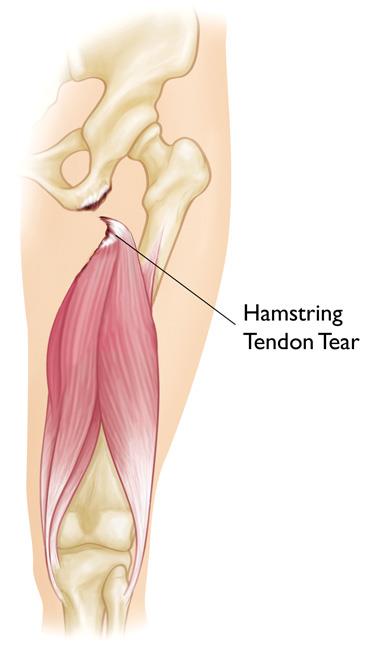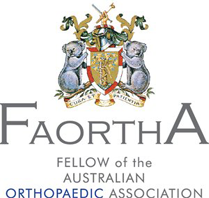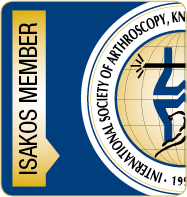
Proximal hamstring tears are common sports-related injuries. They occur during sports or activities that require rapid acceleration such as running, hurdling, water-skiing, jumping and kicking, and is due to forced hyperflexion (bending) of the hip with an extended (straight) knee. These tears can be debilitating and can lead to pain and weakness in the affected leg.
Proximal Hamstring Anatomy
The hamstring muscles originate from the ischial tuberosity, a bony protrusion on the pelvis (at the level of your buttock) and insert either side of the knee (head of the fibula and the tibia). They include the: biceps femoris muscle, which has two heads (long head and short head) and the semimembranosus muscle and semitendinosus muscle. These muscles are responsible for flexing the knee and extending the hip.

Proximal Hamstring Tear
When you sustain a tear of the proximal hamstrings, you often feel or hear a ‘pop’ or tearing sensation and experience severe pain in the posterior thigh/lower buttock area. You may also have difficulty standing, walking or sitting. The back of your thigh can often swell up and have significant bruising due to the tear. You may also experience numbness or pins and needles down the back of your leg due to irritation of the sciatic nerve that lies alongside the hamstring tendons.
Your doctor will organise for you to have an MRI (preferably) or an ultrasound to confirm the diagnosis and to check if you have a partial or complete tear. If you have a partial tear or are not very active, these injuries can be managed without surgery. But for more active individuals who are keen to return to sport, it is best to see a specialist sports surgeon, such as Dr Balendra.
Proximal Hamstring Repair
Proximal hamstring repair is a surgical procedure that involves repairing the tear in the hamstring muscles. Dr Balendra typically performs this procedure with an incision under the buttock to find the torn tendons. He then proceeds to reattach the torn tendons using surgical anchors (special surgical screws that have strong suture material attached to them). The operation typically takes an hour to perform and requires an overnight stay in hospital.
Recovery after proximal hamstring repair typically involves a period of physical therapy and rehabilitation to help you regain strength and flexibility in the affected area. The length of the recovery process can vary depending on the extent of the injury and your overall health, but typically it can take several months. Dr Balendra and his team will guide you through your recovery period.
During the first six weeks after surgery, you will need to limit your activity and will require the use of crutches to move around. A brace will also be placed on your leg to help protect the tendons from excessive stretch. Physical therapy will begin within the first few weeks after surgery, with the goal of regaining range of motion in the affected area. As your strength and mobility improve, the physiotherapy program will become more intense, with an emphasis on exercises to improve muscle strength and endurance. You will be able to return to normal activities and sports only after the tendon is healed, which can take 4 to 6 months.



